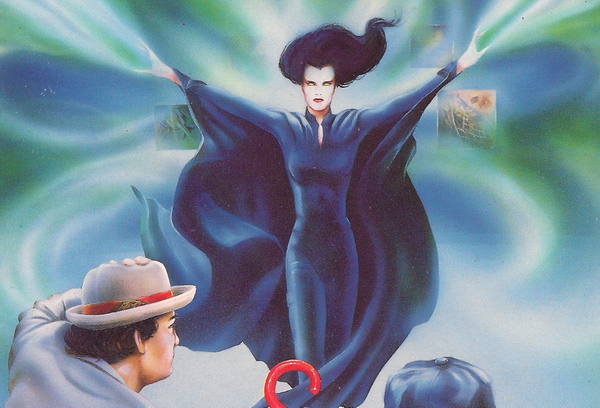|
| |
|
STORY PLACEMENT THIS STORY TAKES PLACE BETWEEN THE NOVELS "SET PIECE" AND "HUMAN NATURE."
WRITTEN BY DANIEL BLYTHE
RECOMMENDED PURCHASE OFFICIAL VIRGIN 'NEW ADVENTURE' PAPERBACK (ISBN 0-426-20437-9) RELEASED IN MARCH 1995.
BLURB Kelzen, a chaotic force in the mind of an unborn 20TH- century earthling.
Jirenal, intent on conquering a future society of dreamers and telepaths.
Shanstra, evil - the tragedies of humans are her SPORT.
While Bernice faces the life-and-death struggle of war, the Doctor must confront the all- powerful trinity. |
|
|
Infinite Requiem MARCH 1995
I found Infinite Requiem to be a bit of a disappointment overall. It contains all the same flaws that plagued Daniel Blythe’s first New Adventure, The Dimension Riders, but sadly it has far fewer redeeming qualities.
My biggest problem with this novel is the narrative – for the most part, it’s just not very good, and even those parts that are have a decidedly familiar whiff about them. The Doctor faces Kelzen, Jirenal, and the evil Shanstra - “the all-powerful trinity” - a gestalt entity that seeks to turn the entire universe into one gigantic consciousness. Sound familiar? It should. In The Dimension Riders, the author recycled many elements from Douglas Adams’ aborted serial Shada, and even gave a few nostalgic nods to that infamous, unfinished story. Here, he just plagiarises half the plot. A little harsh? Perhaps, but after about 250 pages and a ‘seen it all before’ kind of ending, I can’t help but feel a little cheated.
That said, Infinite Requiem isn’t a complete disaster. The Doctor himself is handled well by the author, especially in the passages where he dwells on Ace’s recent departure. Indeed, the plot may not be all that enthralling, but Blythe certainly handles both regulars very well, as well as creating some fascinating characters of his own. Suzi Palsson, on whom a great deal of the plot hangs, is a particularly interesting character. Especially towards the end of the book there are some wonderful twists and turns for her, but even at face value one can sympathise with her obsessive, lovesick character.
Indeed, although most of this novel is set in either the 24th century or later, many of the early chapters are grounded in the present, and these are the ones that I enjoyed the most. Blythe introduces us to Tilusha, a young woman estranged from her devoutly religious family and trapped in a violent relationship. It’s particularly interesting to look at her through Benny’s eyes; it’s hard enough for most people to get their heads around why someone would stay in an abusive relationship like that, so from a more enlightened, 25th century perspective it must appear positively preposterous. Unfortunately though, the 1997 segments feel rather short and before long Bernice is being packed off in the TARDIS with only a holographic Doctor for company (presumably Blythe had been watching Star Trek: Voyager in between his repeat viewings of the Shada VHS!)
However, no
matter how well written the characters are, if the plot doesn’t cut the
mustard the reader isn’t going to get much out of the book. Still,
Infinite Requiem is worth a look if for no other reason than to spot
how many song lyrics the writer manages to quote. Last time it was Nirvana,
this time we have nods to tracks by Pink Floyd and U2. Even if originality
isn’t
on his side, at least Blythe
has taste.
|
|
|
Copyright © E.G. Wolverson 2006
E.G. Wolverson has asserted his right under the Copyright, Designs and Patents Act, 1988 to be identified as the author of this work. |
|
|
Unless otherwise stated, all images on this site are copyrighted to the BBC and are used solely for promotional purposes. ‘Doctor Who’ is copyright © by the BBC. No copyright infringement is intended. |
|

.jpg)
.jpg)
